Sailing through the Panama Canal (The Best Day Tour)
Sailing through the Panama Canal always sounded like such a dreamy bucket list item to me. I wanted to do it. I thought I had an idea what it would be like to go sailing through the Panama Canal, that is until I did it.
One of the reasons I love traveling so much is because it shows me how the world works. Until I did this tour I knew: boats go sailing through the Panama Canal to deliver cargo. And sometimes sailboats pass by too. I also read this book, Tschiffely’s Ride. Way back in the early days he had to get his two horses across the canal. (It’s a great adventure story by the way.)
To summarize: I felt ready to go sailing down the Panama Canal.
We started looking around for a good company to take us on this mission. After reading their exceptional trip advisor reviews we reached out to Ancon Expeditions of Panama. After a few emails we were ready to collaborate, book and go on this adventure.
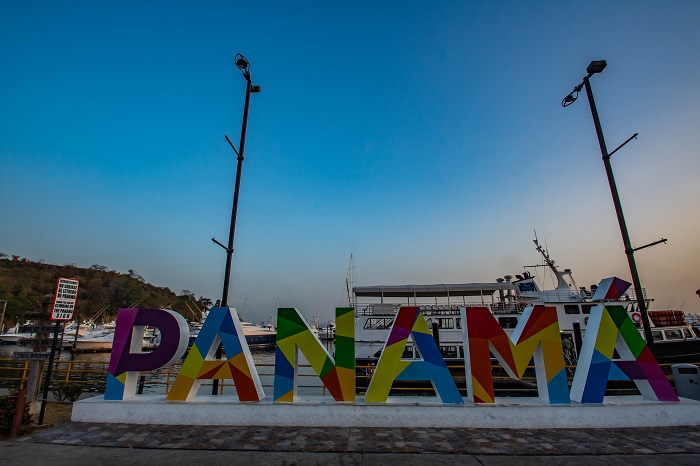
This tour opened my eyes to so many other aspects involving the canal and the process that I had no idea about. My preconceived notions that big cargo ships go sailing through the Panama Canal was on point. 😉 From there my knowledge only increased.
If you get the chance to have this experience, I do recommend it. In the meantime, until you can go yourself, here is a look at:
Sailing Through the Panama Canal
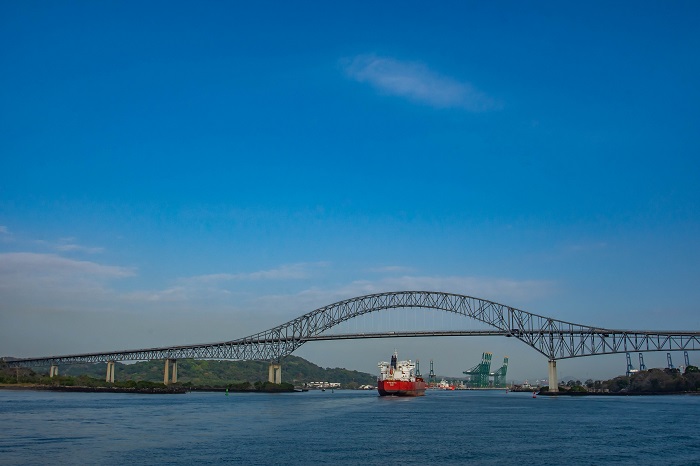
Where is the canal & Why is it Important?
Ok, in case your high school history and geography is a little fuzzy, let’s just get this out of the way now.
The main thing the Panama Canal does is create the only access point for ships to sail between the Pacific and Atlantic Oceans of North and South America.
If the Panama Canal did not exist ships would have to sail completely around the continent of South America.
The canal was built, including the man-made Gatun Lake, to allow for the passage of ships through this geographical area. This is the only gap in the continental divide.
Brief History of the Panama Canal
The first thoughts of seeking a trans-oceanic canal through the Isthmus of Panama dates back to the 16th century. Spanish King Charles V saw the potential for passage and ordered regional surveys to be completed in 1513. A famous figure in the early explorations was Vasco Nunez de Balboa. He is best known for crossing Panama by foot. Once you recognize Balboa’s name, one will realize the Panama currency is called the Balboa. There are multiple avenues, parks, monuments and other attributes named after him throughout Panama, the United States and Spain. We stayed at an Airbnb in the Balboa neighborhood.
Jump forward about 350 years and efforts to build the canal began with the French in 1886. Building and designing the canal was no easy feat. Financial problems and tropical diseases ruined their efforts. The French ceased its mission to build the canal.
Then Panama made an agreement with the United States on the construction of the Panama Canal. From August 14, 1914 until December 31, 1999, the United States would oversee the construction and operation of the Panama Canal. As the agreement stated, on December 31, 1999, Panama assumed full responsibility, operation, administration, maintenance, modernization and all aspects of running the Panama Canal.
The Panama Canal Authority (ACP) is an autonomous government entity that oversees the canal.
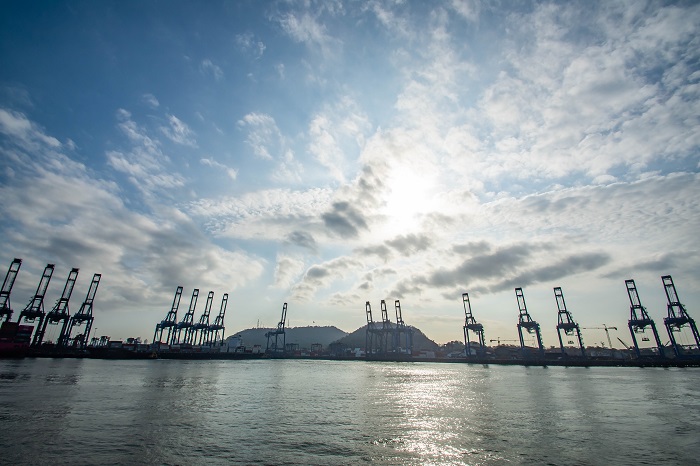
How do I sail through the Canal?
After overhearing various people talk about their thoughts of what it’s like to sailing through the Panama Canal, I realized there are a lot of misconceptions or assumptions about this.
So first, you don’t just casually decide you’d like to go sailing through the Panama Canal.
It is an extremely regimented process. Approximately 14,000 boats go sailing through the Panama Canal annually.
If you are an average tourist the answer is easy: you book a tour with Ancon Expeditions of Panama. 😉
Ancon Expeditions of Panama partners with Panama Marine Adventures boat company to sail through the canal. Our boat had to be met by a canal pilot, given our papers, permissions, and timing of when exactly we would be allowed to go through the locks. And don’t worry – as a tourist – none of this concerned us. We just got to enjoy the sunshine as our bilingual guide informed us of these procedures. It was all interesting tidbits of information of all the steps involved in sailing through the Panama Canal.
If you are a private boat owner that is a whole other ball game. Do your research and get all the regulation details.
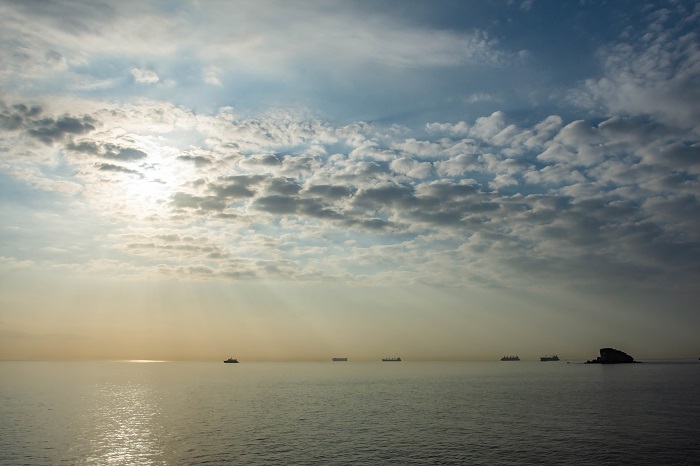
How much does it cost to go sailing through the Panama Canal?
Prior to going on this tour, I wouldn’t have even been able to make a guess as to how to answer this question. $100? $100,000? I had no idea. The pricing varies by length of the boat and sailing through the Panama Canal is not cheap.
The boat we were on cost $4000 to sail through both sets of locks one way. Our tour was the Partial Panama Transit Tour so we sailed through the first set of three locks. Our guide told us that their company was charged a $2000 fee to pass through the canal.
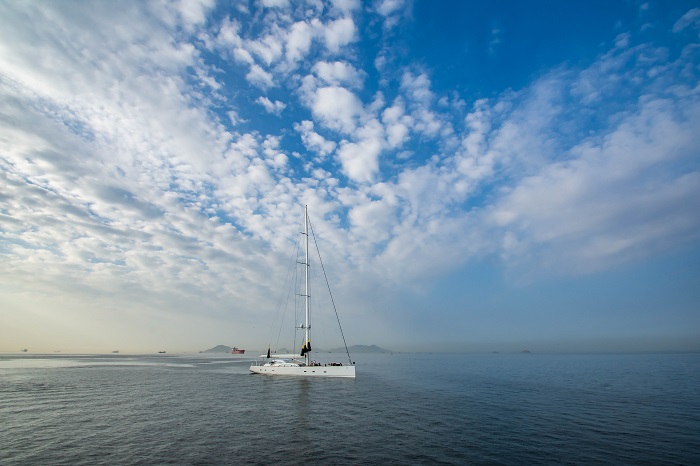
If you are a private boat owner the absolute minimum charge is $800, which is based on the length of the boat. Each sailboat we passed we thought, ‘There goes $800.’
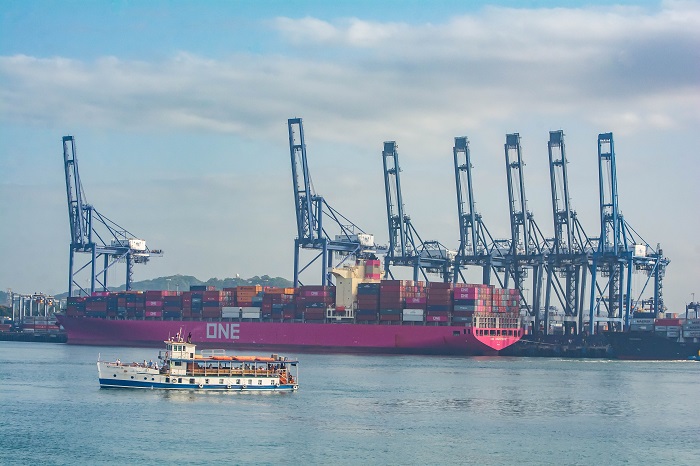
The smallest amount ever paid was $0.36 when Richard Halliburton was permitted to swim the canal in 1928. The highest amount paid by a cruise ship to sail through the Panama Canal was $891,600 with tolls and fees by the Norwegian Bliss. Large shipping containers average paying $1 million and above to sail through the canal.
Once I also understood these charges better I realized why sailing through the Panama Canal is a bucket list activity to save for.
In case your interested for private functions or corporate retreats Ancon Expeditions of Panama does offer a privately chartered yacht. The price tag for that excursion usually run $10,000 upwards due to high canal toll fees, crew and catering fees. So just in case you win the lottery, you can keep this idea in your back pocket. 😉
What are these Locks I go Through?
The lock system was another aspect that I had no idea about. The whole premise with the locks is they are raising or lowering the water by a total of 85 feet to get the boats through. 26 million gallons of water are pumped in or out to raise or lower the water through a series of three locks depending on which direction the boat traffic is traveling.
Part of the reason the flow of boats through the canal is so regimented is to try and maximize the number of boats that can fit in the locks for the efficiency of water and time. At our time for sailing through the Panama Canal, counting our boat, there were a total of three boats permitted to pass through the locks together at the same time or be in tandem together.
Here are three short videos to give you an idea of how the locks fill up.
Here you can see the water getting pumped in.
Here you can see how much the water has risen.
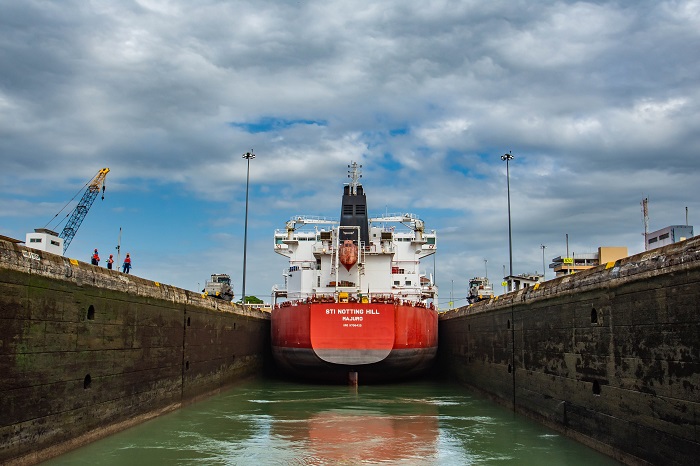
It is pretty amazing to think of the force of water and that this giant boat was going to be lifted up.
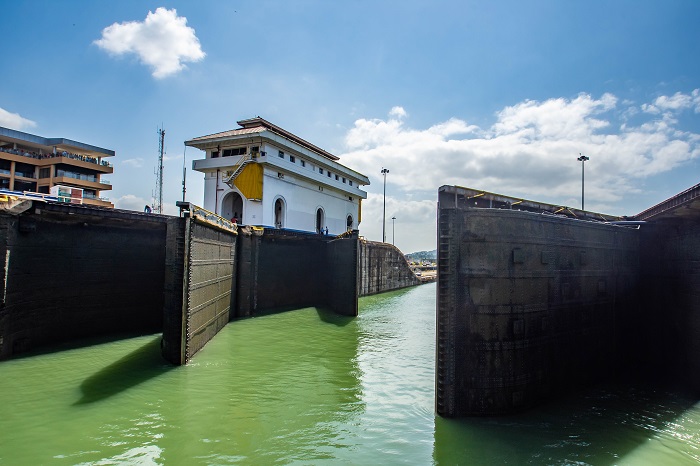
These were the doors to a lock in the process of closing.
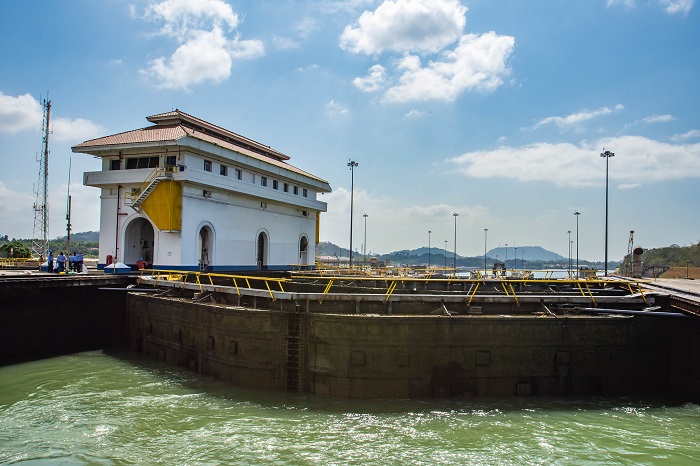
The doors are shut and you can see how much the water has risen.
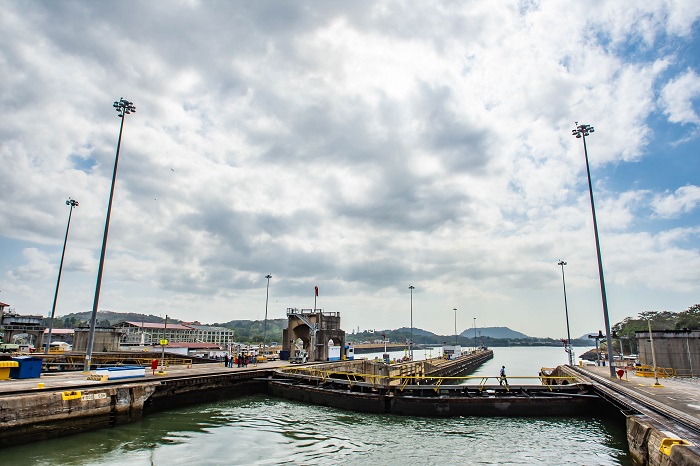
Take note and you can see a person walking along the top of the closed lock for perspective.
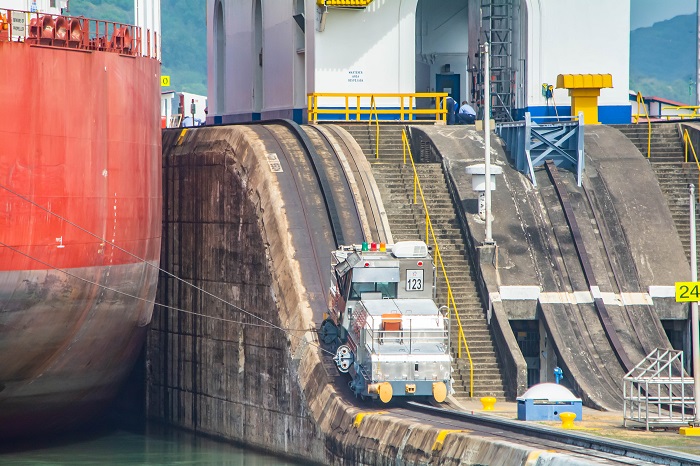
The big boats get guided by what are called mules on tracks on each side of the boat.
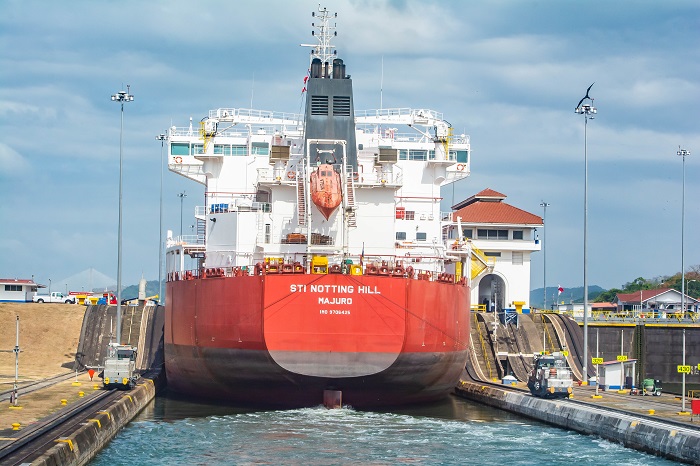
These mules help to keep the massive boats going on a straight course through the canal.
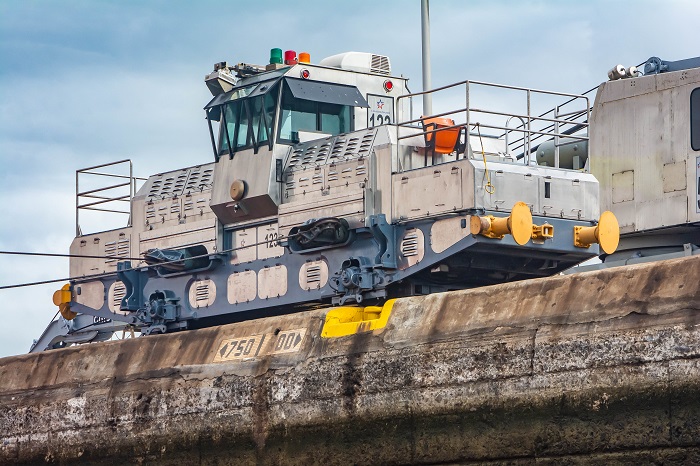
This is a close up of the mule.
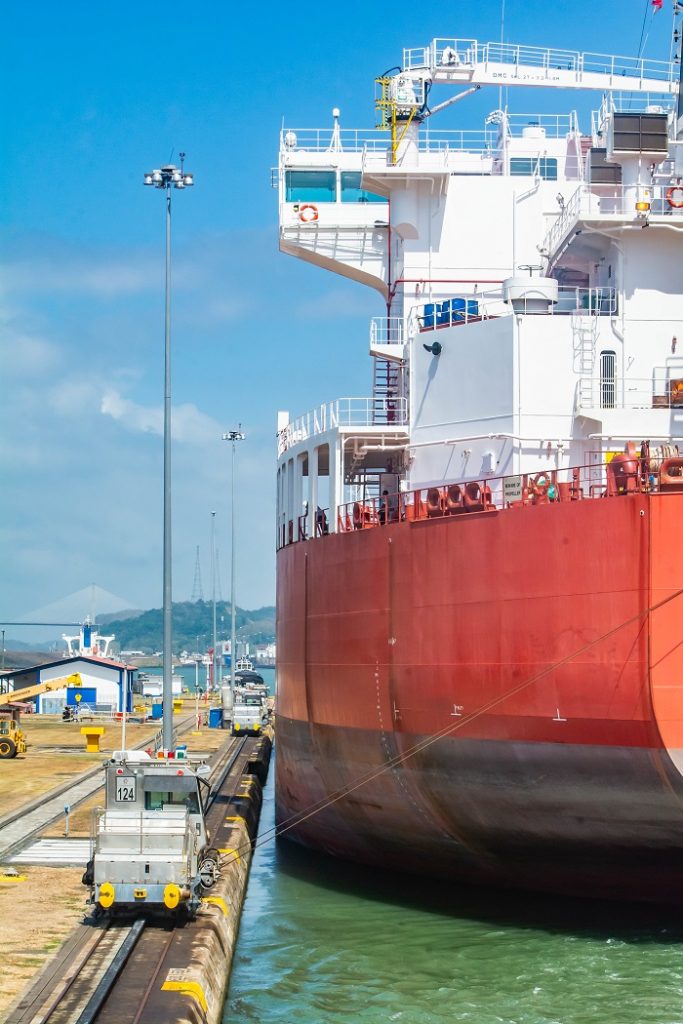
The mule workers are visually working together to keep the boat in line. It is slow moving. As you can see this picture was taken from the rear. Our boat was hanging out behind as this big one was instructed to make its way through first.
What is the boat like for the best day tour sailing through the Panama Canal?
Let’s really get to what most people are probably wondering about: the food and boat comforts.
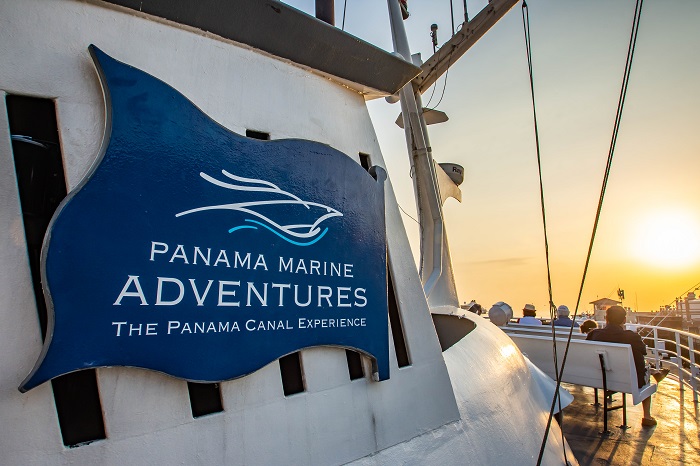
The boat was nice and big which was great because it gave lots of room for people to spread out. There were plenty of shade covered areas, outside seating areas and inside areas with air conditioning.
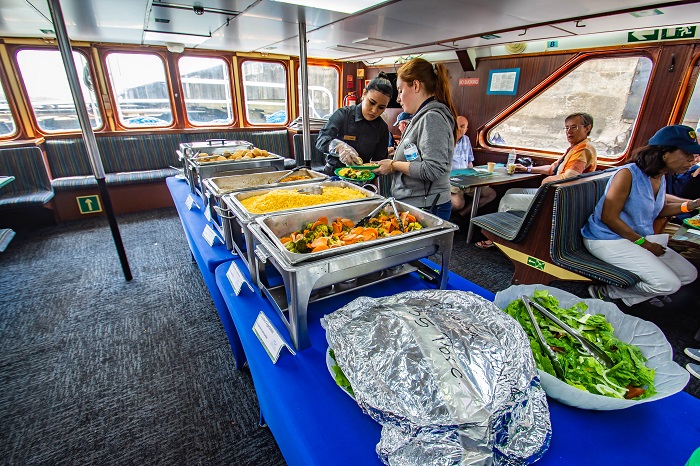
Catering for large groups of people can be a challenge and our lunch was nice and tasty. There was fresh salad, chicken, rice, cookies, and lemonade.
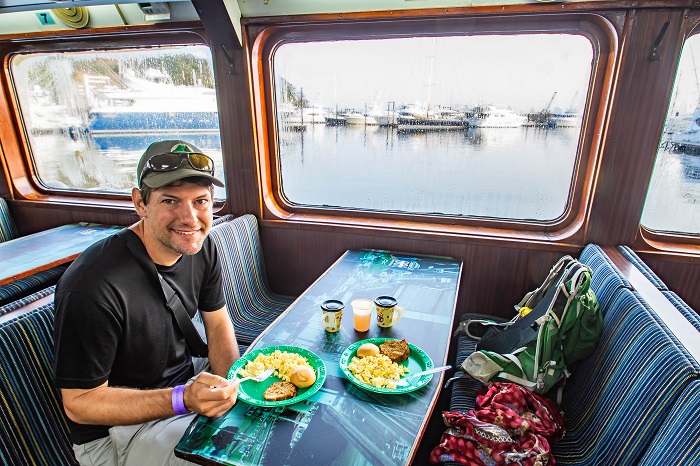
Only if you do the northern route is breakfast included. If you have a super early pickup time (like 6 am) you probably have the northern route. The boat goes up one direction to Gamboa one day. Then the following day it returns to Panama City for the Partial Panama Canal Tour.
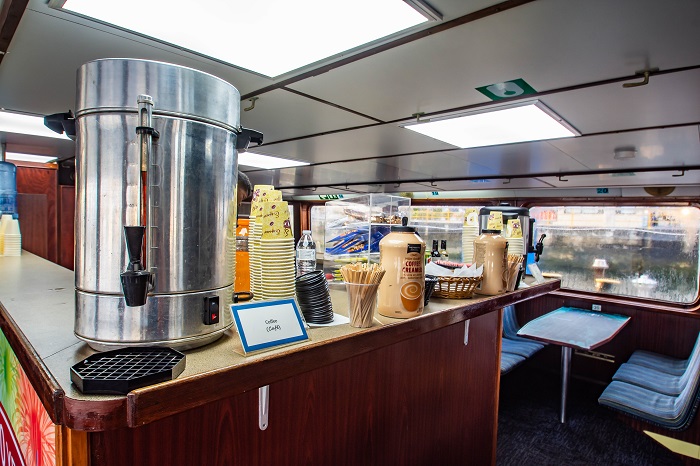
Coffee, water and select sodas were available the entire time at no additional cost. Beers and other beverages could be purchased.
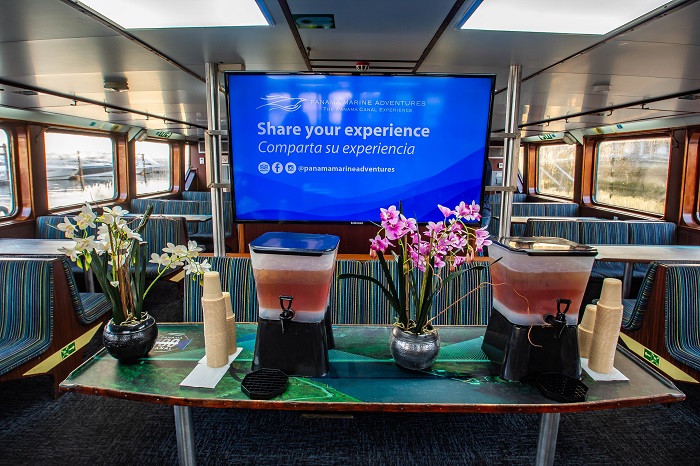
There were nice touches around the boat.
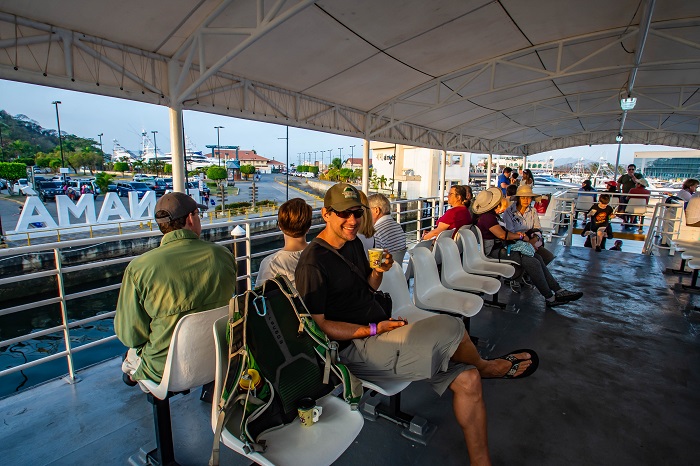
Here’s Chris hanging out, drinking coffee while waiting for the boat to depart.
Some Interesting Facts:
26 billion gallons of water gets pumped every time boats pass through the locks. Pretty much every person wondered about the water usage. But Panama gets so much rain and the Chagres River runs strong. This did not seem to be a concern.
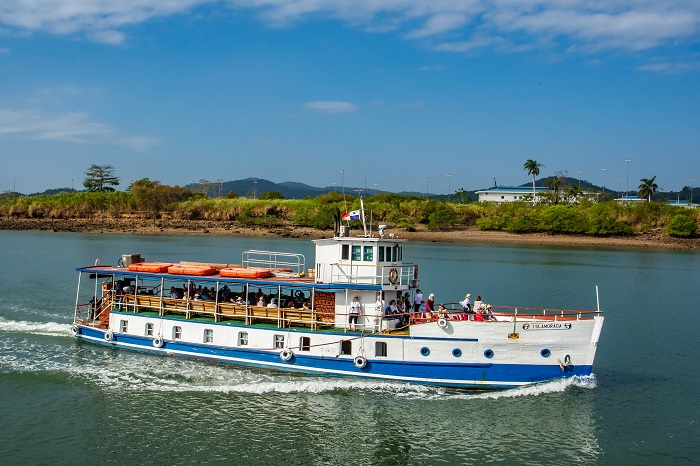
At least on the day we went we got to sail alongside Al Capone’s boat. Like the actual boat of the gangster Al Capone(!). He used this boat to run rum from the Dominican Republic to Florida. The boat was also owned by JP Morgan too. This is one of the oldest customer running boat in use on the canal.
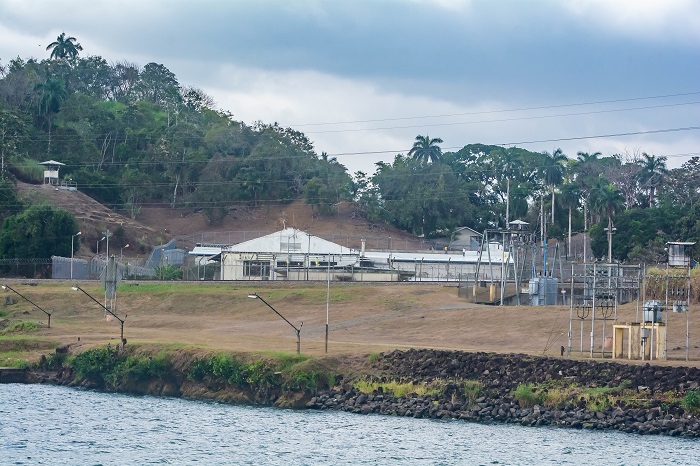
We passed the Renacer Prison – which I would have never even realized there was a prison here. It housed Manuel Noriega who was one of Panama’s dictators and has since passed away. It also houses Panama’s last president, Ricardo Martinelli. He was extradited from the United States on a long list of corruption charges and some sarcastically say he is “vacationing” in prison.
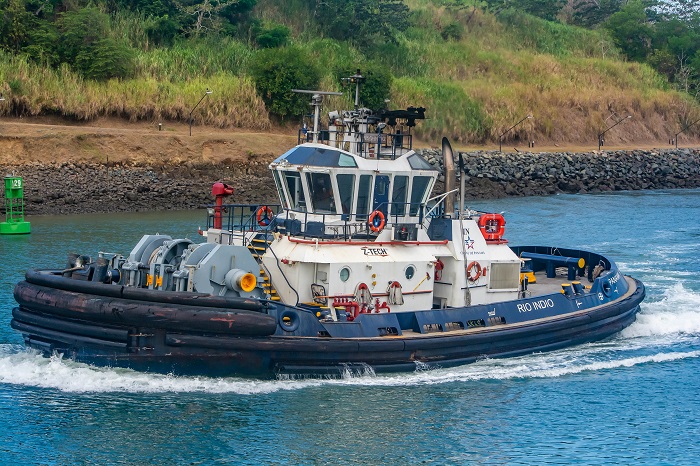
Do you want to guess how much it costs to operate a tugboat per hour? For the big shipping containers, tugboats are absolutely mandatory. The canal authority decides what types and sizes of ships need the assistance of tug boats and also how many tugboats that ship will need.
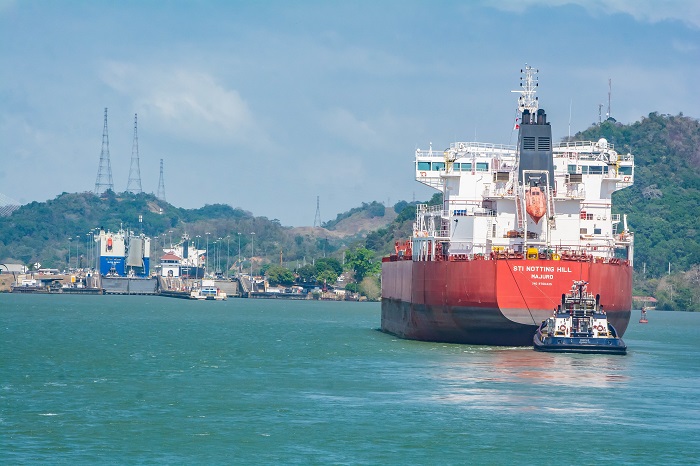
As our guide was explaining to us, it might not seem like a huge deal or that possible for a ship to get off course in the canal. The water in Lake Gatun is shallow as it’s man-made. All it would take is a brief moment to go off course and a big boat like that can’t recover quick enough. It would get grounded in the shallow waters.
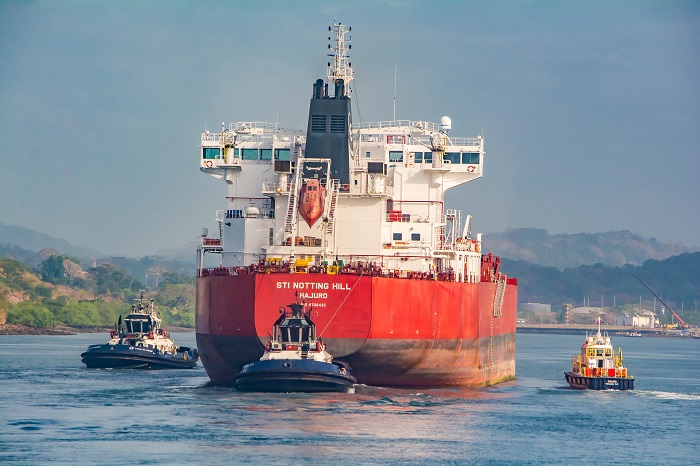
So do you want to take a guess…keep scrolling…
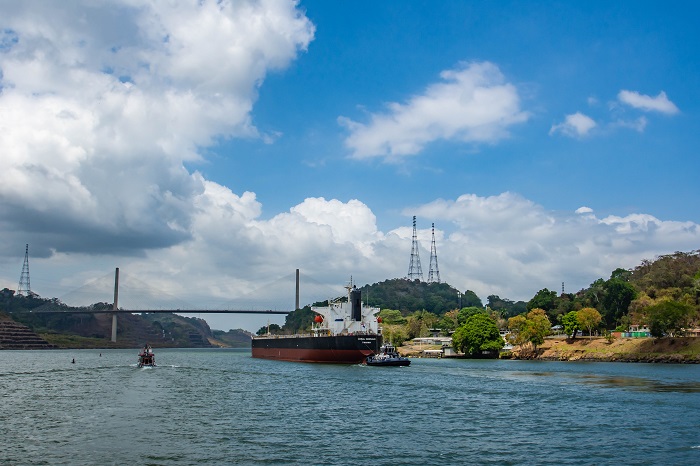
It costs $3000 per hour per tug boat to operate. That is not a typo. Maybe this information will help you win a game of trivia one night. 🙂
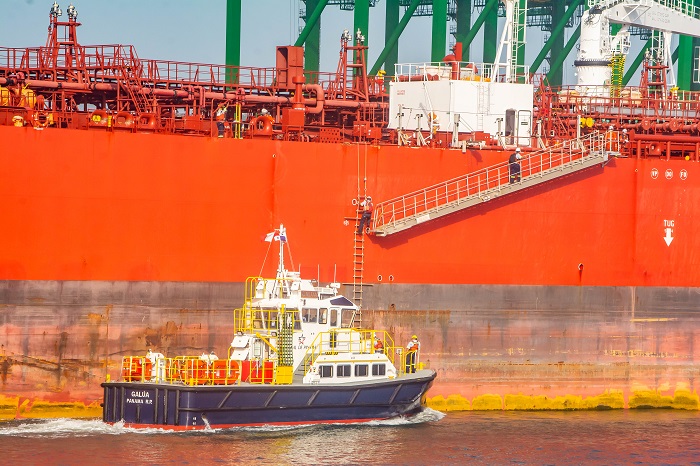
Imagine this as your commute to work!
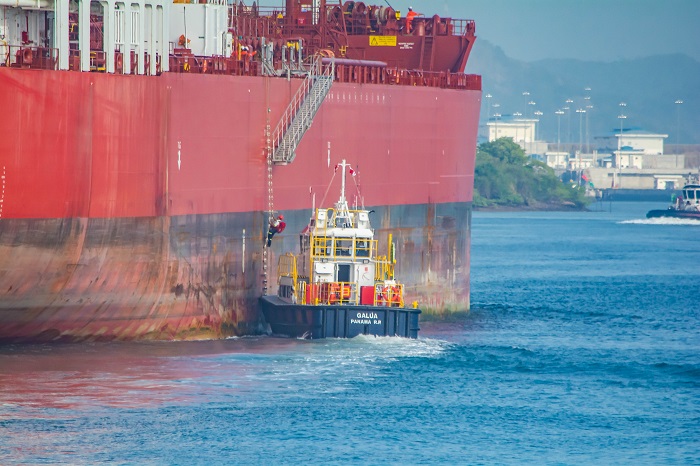
Take note the boat above is not a tug boat. It delivered a bunch of people who climbed up onto the big boat for work. This was quite an interesting and unusual activity for most boat passengers to observe.
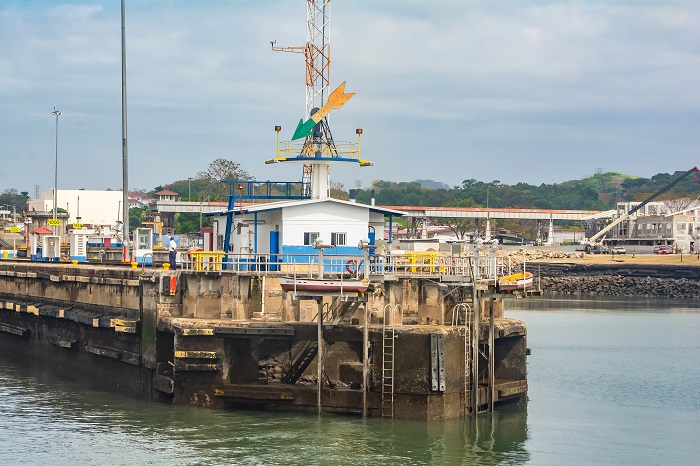
Fun fact: this arrow sign was the very first neon sign in Panama. Whichever way the arrow points is the lane of the canal the boat needs to enter.
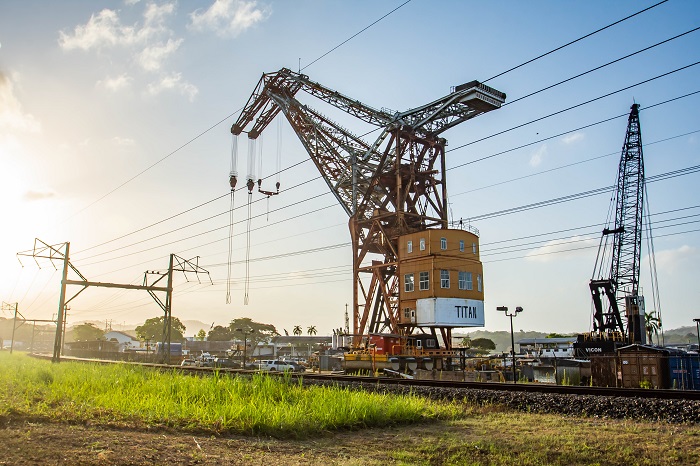
Impressive, historic and hard to grasp just how big (its taller than a football field) the Titan Crane is a sight to see. This crane can lift 350 metric tons and is one of the strongest cranes in the world.
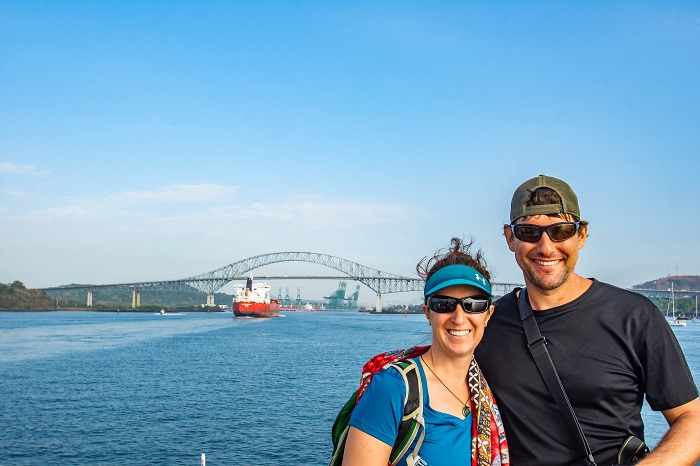
As our day of sailing and history came to an end we were all directed to buses based on our wrist band color given earlier in the day. Prior to going on this tour, I thought it would be cool to say I went sailing through the Panama Canal. What I didn’t realize was just how much more I would get out of the experience. I think one of the greatest gifts of travel is the ability to learn more about how the world works. And after this excursion, I certainly had achieved that goal.
***
What to Bring?
You don’t need to bring much. You are hanging out on a boat all day, but there are definitely some items you’ll want to have to be comfortable. I recommend:
Camera – in case you are looking for a really good and affordable travel camera – I think this Panasonic Lumix is one of the best cameras out there. It takes great photos, videos and is drop proof and shockproof. I love this camera.
Sunscreen & Hat – people were getting burned. Watch your sun intake.
Jacket/Sweater – it can get windy if you’d like to sit out at the front of the boat. I was really glad I had a long sleeve shirt with me.
If you have kids it might be nice to bring a simple game like a deck of cards. It will always vary day by day, but there may be a little waiting time if there are boats in front of you and you need to wait to get the ok to proceed through the lock.
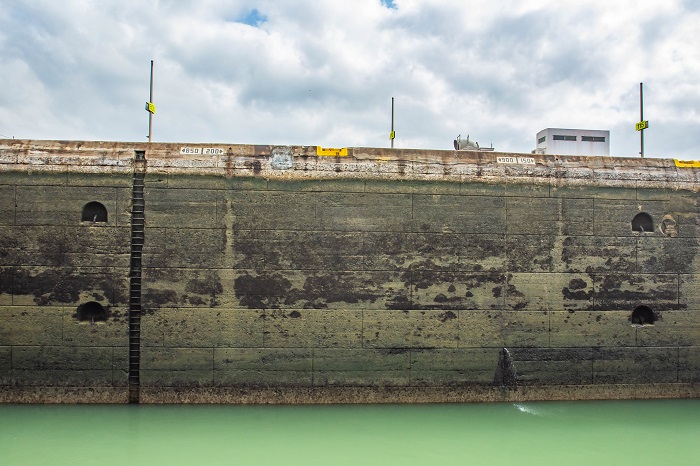
Make your Booking!
Check out Ancon Expeditions website and facebook page.
You can email them at: info@anconexpeditions.com or call + 507 269-9415 in Panama or
USA/Canada Toll Free: 1-888-760-3426
They run and offer other tours as well. The exact tour we did was the Partial Panama Canal Transit. You will see this on the home page as you scroll down a little bit.
This was a unique experience and we hope that if you wish you will get the opportunity to experience the same.
***
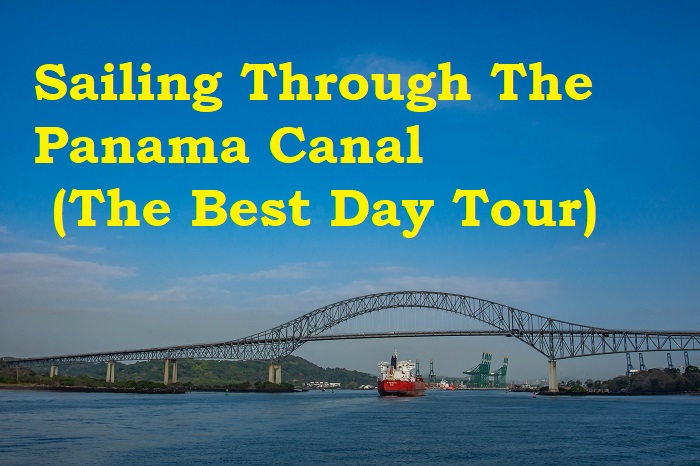
Curious what else we did in Panama? Check out this post about kayaking.
Curious where we stayed in Panama City? Check out this fab place with a great location.
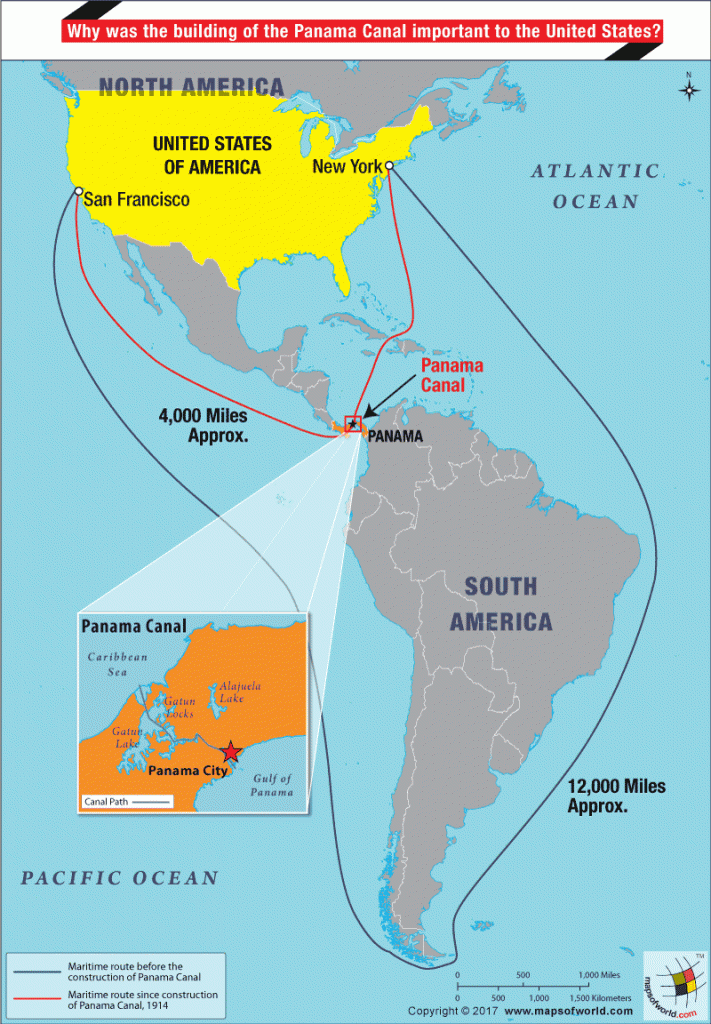
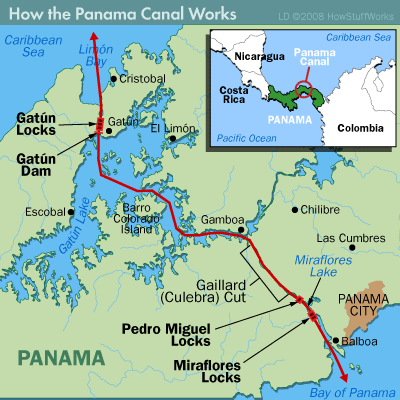
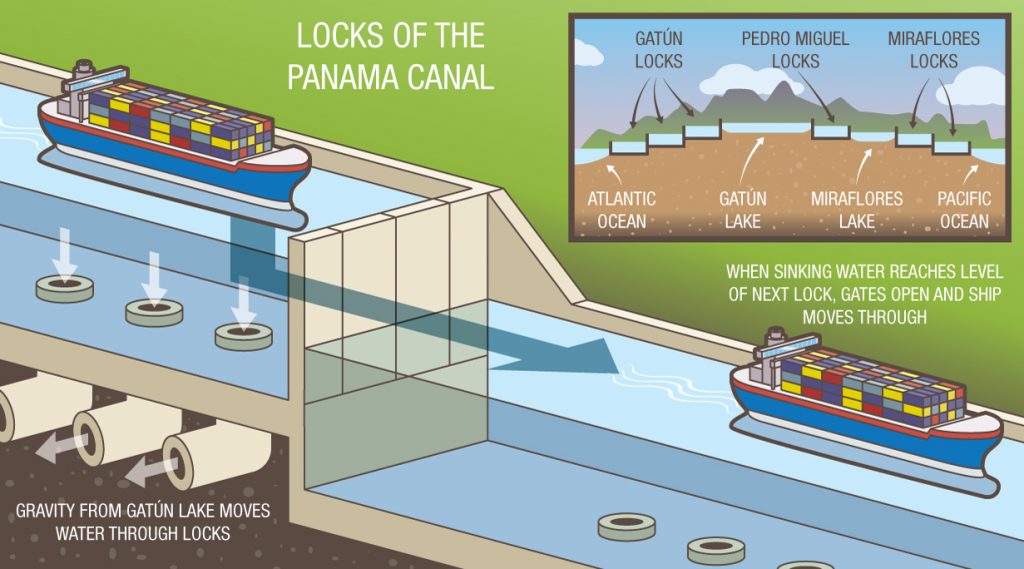
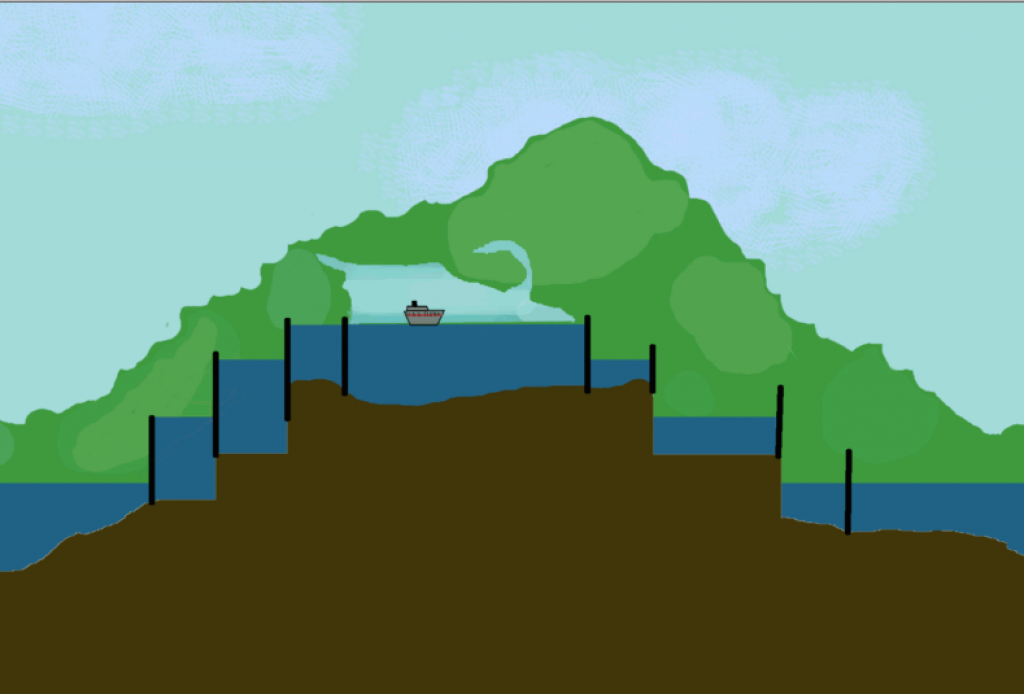
 Previous Post
Previous Post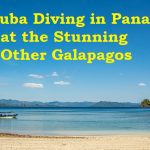 Next Post
Next Post
A fantastic trip I never would have made without you, thanks!
Oh thank you! I had no idea about all these things regarding sailing down the canal. I found it fascinating! 🙂
An adventurous post no kidding! So happy you both decided to “take the leap” and share it . The pics are stunning and the history part of post beyond interesting. Sounds and looks like the Panama Canal runs like “clock work” and serves many interests, from
pleasure (you) to business! I love the videos! Don’t imagine there is anything to compare with it, eh?
mare
Thanks for all the kind words, and nope, nothing compares with this experience. Bucket list activity for sure!
From the port to the mid sea view, everything is so fascinating and mind-blowing, really want to visit this place again sometime later.
David recently posted…How To Make a Foxhole Radio